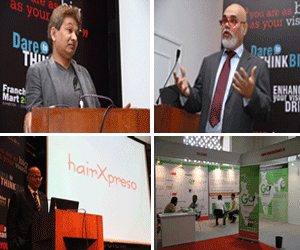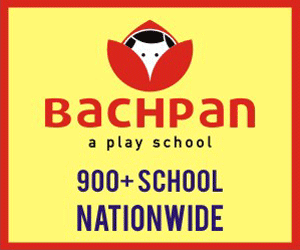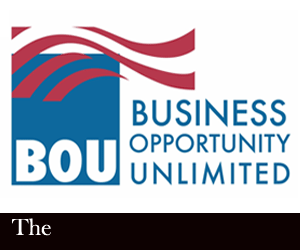Satya Narayanan R built a successful business around education by taking Career Launcher to every nook and corner of the country through the franchising way.
Early into his career at Ranbaxy and a sales and marketing executive, it was clear to Satya Narayanan R, that the corporate life was not made for him. “I decided I needed to do something else with my life. I wanted to do something where I had freedom, could do whatever I wanted and I was sure I was not cut out for the corporate word,” says Satya Narayanan. He delved hard into thinking what can be done. He had no money and barely one year of work experience. “When I joined the two inside out — my resources, my limitations and the opportunity, Career Launcher was what came to my mind,” he says.
Early life:
Born in Bangalore in 1970, Satya Narayanan R’s father was a central government employee. With three brothers and a sister to keep company, first 13 years of Satya Narayanan’s childhood was in Hyderabad.
The family moved to Meerut in 1983, where Satya Narayanan spent a couple of years. Extremely interested in cricket, Satya Narayanan came to Delhi in 1985 to participate in a selection for summer cricket camp.
“I got selected and moved to Delhi where Bishan Singh Bedi coached me. I stayed in Delhi for about 45 days and did extremely well,” says Satya Narayanan. In fact he had done so well that Bedi insisted he take admission in a school in Delhi and continue playing cricket.
After completing his schooling Satya Narayanan enrolled in Delhi University’s St. Stephen’s College for its 1988-91 batch in BSc, Computer Science.
“Those few years I did nothing but play cricket. It went off well for some time but beyond a point it was beginning to plateau and that was a cause of anxiety. Thankfully I had not neglected my studies too much and decided the safety net has to come from academics,” says Satya Narayanan. He appeared for his CAT exams and in 1991went to IIM-A and graduated by 1993. “I tried my level best to pass and was consistently in the bottom half of my class. Luckily for me I managed to get placed in Ranbaxy,” he says. Satya Narayanan joined in sales and marketing but grew bored of it within one year.
The Process:
It was a slow gradual process of thinking, deliberations and mulling over various options.
“Ranbaxy was a great company and I had a good boss but it was fairly evident that I did not want to do a job. I had unspent energy and the job was not demanding the best I had to offer. If one looks back at the previous ten years before joining work I was in the cricket field 8-10 hours a day. Those days I had infinite amount of physical energy. A job did not utilize my full energy and I did not know what to do with my leftover enthusiasm,” says Satya Narayanan.
Entrepreneurship was the answer to tap into that energy. According to Satya Narayanan entrepreneurship has a good therapeutic effect.
“While it was sure I wanted to be an entrepreneur, I had no idea what to start. When I quit my job I barely had Rs 4000-5000 in my bank and my father could not help me financially. Brother and sisters were still studying and I knew it would be tough,” he says.
Somewhere in the midst of all this Satya Narayanan realized that people craved and deeply wanted to go to IIM to study. Satya Narayanan had gone to an IIM and realized it was a good selling point. At IIM Satya Narayanan realized that the caliber of the students there was very different and there were things that he thought he knew that he could share.
“I was hoping someone would give me some money to share that information,” says Satya Narayanan.
While everyone was singularly focused on the written test it was clear to him that the personal interview and group discussion was a very integral part. Satya Narayanan came up with a product called personality development programme (PDP) and went about delivering that.
The first 7-8 months Satya Narayanan visited various college hostels in Delhi University or IIT Delhi. “I spent a lot of time with the students and came up with the idea of doing a mock CAT examination. It used to happen even at that time but every college had its own mock exams run by student organizations. I brought them around and convinced them to carry out one mock test with me. They were spending close to Rs. 10,000-15,000 for one mock exam because they needed to go to an existing player in test preparation market and get them to make a question paper for them,” says Satya Narayanan. Satya Narayanan offered to make the question paper free of cost, charge Rs. 50 from interested candidates and allow the students bodies to keep the money they had raised. On November 17, 1994 about 484 people took the mock CAT and it was a runaway success for Satya Narayanan.
Between the mock CAT and the real exam, Satya Narayanan would spend about eight hours solving various problems for students. “I did all this for free since I did not have the money I felt I needed to give my prospective business the sweat equity,” he says. These interactions spread the word and for Satya Narayanan it was clear that he did not want the entire world to know of him and his work. His target was the college going students who were serious about the CAT exams. By going to each college in Delhi University, spending considerable time with students, introducing a magnet called mock CAT examination; Satya Narayanan was directly addressing his target customers.
From all the students that came up to him, Satya Narayanan used to focus on the top 80-100 who were good during the mock tests. “If the top 80-100 students across Delhi gave CAT, it was sure that they would get a call from some top management institutes in the country. After CAT was over I urged these 80-100 people to immediately start preparing for their group discussions and personal interview. It did not dawn on all of them but my first batch for PDP was of about 34 people,” says Satya Narayanan.
At Rs. 750 Satya Narayanan’s class on personality development and tricks and tips to ace group discussions started as Career Launcher in October, 1994. The first classes were held at Sri Ram College of Commerce (SRCC) and were an intensive 30 hours programme spread over three weeks. Most of these classes were in the evenings and over the weekend.
After the calls for interviews from IIMs were made, another 40 joined Satya Narayanan class paying Rs. 1000 each. This meant for the first year 74 students were through the process of training and Satya Narayanan pocketed revenue of about Rs. 80,000-90,000. From the 74 who joined his classes about 60 went to the IIMs, which practically meant that after that year anyone who cleared the written test wanted to join Satya Narayanan to crack the interview and GD.
The Next Phase:
The personality development programme (PDP) and GD preparation was only for three months and Satya Narayanan would have been rendered jobless for the rest of the year. “I decided to take the mock CAT tests to different places in India. I took mock CAT to some 30 cities across India by the second year by merely replicating the same model across lots of campuses,” he says. By then Satya Narayanan had also roped in some fellow IIM batch mates to help him out on a voluntary basis.
CAT used to happen on an OMR sheet and Satya Narayanan wanted to give the students that experience in the mock tests. No one had thought of this till now but Satya Narayanan was able to trace the company which supplied OMR sheets for CAT. He managed to convince the owner of the company to supply him OMR sheets and his students started getting the real experience of taking the tests.
By the end of second year Satya Narayanan had reached out to about 2400-2500 students with his mock CAT but focused only on Delhi for his PDP course.
That year he had about 250 students for his PDP class, while the price for the course was hiked to about Rs. 1500-2000. That year Satya Narayanan clocked impressive revenue of Rs. 8-9 lakh.
Getting a grip:
In 1998, Satya Narayanan decided to launch test preparation for the written exam itself. “If you could charge X amount for PDP, I could charge 2X for the written preparation. This would also ensure business for the entire year. We were apprehensive to begin with but decided to go along as many students would come up to me and suggest the same,” says Satya Narayanan. Once he started a written test preparation, there was a flood of student and there was no looking back. The programme was priced at Rs. 8500 and was a runaway success with 350 people enrolling for the first batch. That year turnover jumped to about Rs. 50 lakh and there was a lot of enthusiasm.
“The good thing was we had to do the same thing through out the year. It did not seem like a job to me as I interacted with youngsters and helps me learn. I did not get in Career Launcher to become a millionaire or a billionaire. My idea was to get away from a mundane job and do something that I enjoy,” says Satya Narayanan.
By the year 2000, Satya Narayanan had a class of about 2000 students for his PDP courses but continued to be Delhi centric till about 2001 after which he decided to broaden its horizon.
The proposition:
There was couple of business growth hypothesis that Satya Narayanan had built, which were extremely against the norms. Statistically you could not prove the viability of what he had in mind. “The first premise that we came up with was that there would be many in the country that would be similar to us. They have the talent, want to do something, make a contribution to the society but do not have the money,” he says.
He started searching for replicas across the nation — individuals who have been to IIMs but cannot gel well in the corporate sector. “When I was doing the first round of investments talks, this concept seemed Greek and Latin to the VCs,” says Satya Narayanan.
The other hypothesis that Satya Narayanan worked on was that the test prep business can be franchised. During those days there was no company in the test prep market who was present in more than one place.
“We were saying that we can franchise our brand but naysayers argued this could never be done. In 2001 when we set out on our pan India journey, it was based on these two hypothesis. In the first five years of our start we did not manage to expand beyond Delhi but in the next five years we covered 100 cities through the franchising model and without investing a rupee,” says Satya Narayanan.
Such was the demand for Career launcher that it was charging 25 percent of franchisees revenue when competitors were charging about 16 percent. “Ours was an intensive course with a lot of teachings. Even today we charge 25 percent of franchisees revenue and in some products even charge 35 percent. We believe we have good product at hand,” says Satya Narayanan.
By 2006, CL was completing about a decade of existence and the company had grown to a Rs. 40 crore company. That was the time when MBA prep was at its zenith and it was a great period for doing business. But deep inside Satya Narayanan were getting anxious that the MBA party would not last long.
“In my mind I wanted to get from a Rs. 40 core to a Rs. 240 crore in the next five years. It was clear that such numbers were not possible with only test prep,” he says. After hectic deliberation CL entered the K12 segment and the opening of schools came out of that strategy. The company has 20 schools spread across about 18 cities, entered into vocational training and also entered test prep publishing by acquiring a company.
“The Rs. 40 crore to Rs. 240 crore has happened in six years, where test prep contributed about Rs. 100 crore,” says Satya Narayanan.
The private test market has also being seeing a lot of activity from the investing community as private equity and venture capitalists are bullish on scalable business models.
Focus is now on education companies that are targeting the huge opportunities in domestic market.
Franchising Model:
To buy into a Career Launcher franchise, investment ranges from Rs. 6-10 lakh and return on Investment ranges from 20 percent to 40 percent over 10-12 months depending upon city to city. The total project investment including interiors and infrastructure would range about Rs.15 lakh. In terms of space franchisee would require 1200-1500 square feet.
For a franchisee Career Launcher conducts regular training programmes. The training programme exposes the franchisee to various areas operations such as faculty training, sales and marketing, running the centre, books, technology amongst others. Career launcher also undertakes direct marketing and on ground marketing. The company today has more than 150 franchisees up and running across various cities in the country.































 +91 9909960054
+91 9909960054